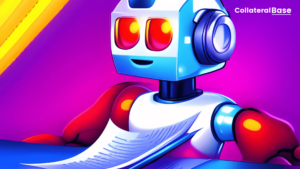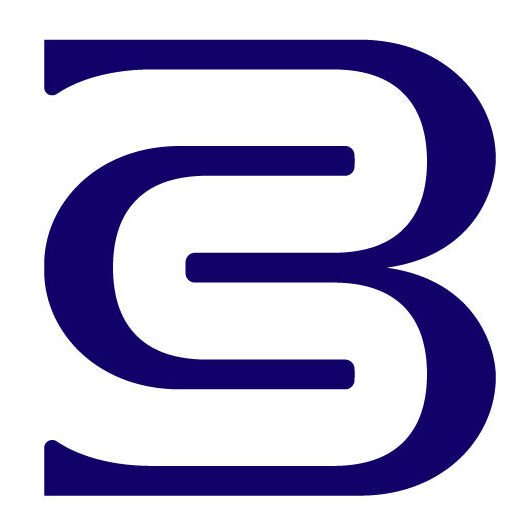 Who is the legal owner of an IP created by an LLM?
Who is the legal owner of an IP created by an LLM?
Ownership of IP for information created by an LLM is complex. It depends on a variety of factors.
For example, if an LLM is trained on copyrighted material, the copyright holder may own the IP for any information created by the LLM. Similarly, if an LLM is created by an employee of a company to design a new product, the company may own the IP for any information created by the LLM.
Other factors that may affect the ownership of IP for information created by LLMs include the purpose for which the LLM was created, the nature of the information created, and the laws of the jurisdiction in which the information was created. As LLMs become more advanced and capable of creating original and creative information, the law will need to be updated to reflect these changes.
It is important to note that this is an evolving issue, and the ownership of IP for information created by LLMs may vary depending on the specific circumstances. If you have any questions about the ownership of IP for information created by LLMs, it is recommended that you consult with an attorney.
Who holds the copyright to an IP created by an LLM?
The ownership of intellectual property (IP) created by a large language model (LLM) depends on various factors such as the specific LLM, the nature of the information created, and the laws of the jurisdiction in which the information is created. In general, the creator of the IP owns the copyright.
However, there are exceptions, such as when an LLM is trained on copyrighted material, in which case the copyright holder of that material may own the copyright to any information created by the LLM. Similarly, if an LLM is created by an employee of a company as work product, the company may own the copyright to any information created by the LLM.
The purpose for which the LLM was created may also determine the ownership of the IP. If the LLM was created for commercial purposes, the owner of the LLM may be more likely to own the IP for any information created by the LLM. Similarly, if the information created by the LLM is original and creative, the owner of the LLM may be more likely to own the IP for that information.
It is worth noting that this is a complex and evolving issue, and the ownership of IP for information created by LLMs may vary depending on the specific circumstances. Therefore, it is best to consult with an attorney for any questions related to the ownership of IP for information created by LLMs.
Does an LLM retain rights to an IP they create?
The ownership of intellectual property (IP) for information created by large language models (LLMs) is a complex issue that depends on various factors. In general, the owner of the IP is the person or entity that created it. For example, authors have the exclusive right to sell the books they write or license them out to distribute them to a larger audience.
However, exceptions to this rule exist, such as when an LLM is trained on a dataset of copyrighted material, the copyright holder of that material may own the IP for any information created by the LLM.
The ownership of IP for information created by LLMs is still being debated and clarified by courts and lawmakers, and may vary depending on the purpose for which the LLM was created, the nature of the information created, and the laws of the jurisdiction in which the information was created.
Therefore, it is difficult to give a straightforward answer to whether an LLM retains rights to an IP they create. The answer may depend on the specific facts and circumstances of the case. It is advisable to consult with an attorney to determine the ownership of IP for information created by LLMs.
Who is the rightful owner of an IP created by an LLM?
The ownership of intellectual property created by large language models (LLMs) is a complex issue that depends on various factors such as the specific LLM, the nature of the information created, and the laws of the jurisdiction in which the information is created. In general, the creator of the IP is the rightful owner. Of course, there are exceptions to this rule.
For instance, if an LLM is trained on a dataset of copyrighted material, the copyright holder of that material may own the IP for any information created by the LLM. Similarly, if an LLM is created by an employee of a company, the company may own the IP for any information created by the LLM.
The purpose for which the LLM was created, the nature of the information created, and the laws of the jurisdiction in which the information was created are also factors that may affect the ownership of IP created by LLMs. As LLMs become more sophisticated and capable of creating more complex and creative information, it is likely that the law will need to be updated to reflect these changes.
In summary, the ownership of IP created by LLMs is a complex and evolving issue that may vary depending on the specific facts and circumstances, and consulting with an attorney is advisable if you have any questions about the ownership of IP for information created by LLMs.
Who has the legal rights to an IP created by an LLM?
The ownership of intellectual property (IP) for information created by large language models (LLMs) is a complex and evolving issue. In general, the owner of IP is the person or entity who created the IP. However, there are exceptions to this rule.
If an LLM is trained on a dataset of copyrighted material, the copyright holder of that material may own the IP for any information created by the LLM. Additionally, if an LLM is created by an employee of a company, the company may own the IP for any information created by the LLM.
The ownership of IP for information created by LLMs may vary depending on the specific facts and circumstances. Factors such as the purpose for which the LLM was created, the nature of the information created, and the laws of the jurisdiction in which the information was created may affect the ownership of IP.
As LLMs become more sophisticated and capable of creating more complex and creative information, it is likely that the law will need to be updated to reflect these changes. If you have any questions about the ownership of IP for information created by LLMs, you should consult with an attorney.
Who has control over an IP created by an LLM?
The ownership of intellectual property (IP) created by a large language model (LLM) can be a complex issue. In general, the owner of the IP is the person or entity who created it. However, there are some exceptions to this rule.
For example, if an LLM is trained on a dataset of copyrighted material, the copyright holder of that material may own the IP for any information created by the LLM. Additionally, if an LLM is created by an employee of a company, the company may own the IP for any information created by the LLM.
The ownership of IP for information created by LLMs is still being debated and clarified by courts and lawmakers. Factors that may affect the ownership of IP for information created by LLMs include the purpose for which the LLM was created, the nature of the information created, and the laws of the jurisdiction in which the information was created.
It is important to note that this is a complex and evolving issue, and the ownership of IP for information created by LLMs may vary depending on the specific facts and circumstances. If you have any questions about the ownership of IP for information created by LLMs, you should consult with a legal expert.
If LLMs create patents or trademarks can those be owned by its employer?
The answer to this question is not straightforward and will depend on various factors. For example, if an LLM is created by an employee within the scope of their employment, then any patents or trademarks created by the LLM may be owned by the employer. However, if the LLM was created outside of the employee’s scope of employment, the employee may own the patent or trademark rights.
It’s important to note that patents and trademarks are separate from copyright and have their own set of rules and regulations. Additionally, the ownership of patents and trademarks may also depend on the specific circumstances and agreements between the employer and employee.
Ultimately, it’s important for employers to have clear contracts and agreements in place with their employees regarding ownership of IP rights. This can help avoid any confusion or disputes down the line and ensure that all parties involved are aware of their rights and responsibilities.
If you’re unsure about the ownership of patents or trademarks created by an LLM, it’s best to consult with an experienced IP lawyer who can provide clarification and guidance based on your specific situation.
In some cases, the intellectual property (IP) created by a large language model (LLM) may be treated similarly to IP created by employees on a “for hire” basis. This means that the employer owns the IP rights to any work created by the LLM, just as they would if the work was created by an employee.
The “for hire” doctrine generally applies when an employee creates work within the scope of their employment. In this case, the work is considered a “work made for hire,” and the employer is the legal author and owner of the work. This doctrine has been applied to various forms of IP, including copyright, patents, and trademarks.
Similarly, if an LLM is created by an employee of a company and the LLM generates work within the scope of their employment, then the employer may own the IP rights to that work. This would be the case even if the LLM created the work autonomously, without direct input from the employee.
It’s important to note that the “for hire” doctrine does not automatically apply to all situations involving LLMs. The specific circumstances surrounding the creation of the work will need to be evaluated to determine whether the employer has ownership of the IP rights.
If you’re considering using an LLM to generate creative work for your business, it’s important to have clear agreements in place with your employees and any contractors involved in the project. These agreements should outline the ownership of IP rights and clarify any questions or concerns related to the use of LLMs in the creation of such work. Additionally, it’s important to stay informed about the evolving laws and regulations in this area, as they may impact the ownership and protection of your IP rights.
In conclusion, understanding the complexities of IP ownership for work created by LLMs is crucial for businesses that rely on these technologies. By taking the time to clarify ownership and establish clear agreements with employees and contractors, businesses can protect their IP rights and avoid any potential disputes or legal issues. And if you’re ever unsure about the ownership of IP rights for work created by an LLM, consulting with an experienced IP lawyer can provide the guidance and support you need to make informed decisions.





